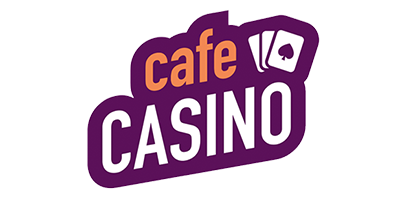The Grand Martingale Strategy

Table of Contents
Professional and casual gamblers are always looking for ways to beat the house. That includes crafting all sorts of betting strategies and systems. Blackjack and roulette have been perfect breeding grounds for gamblers to test these strategies. One is the Grand Martingale strategy, a derivative of the classic Martingale. The latter originated in the 18th century in France and is renowned for its aggressive approach to recovering losses and securing profits. The difference between these two strategies is that when the player loses, they add a bet as well as doubling it. As a result, this makes the Grand Martingale a topic of interest for high rollers and strategic gamblers alike. Let’s take a closer look at this strategy, how to implement it, and alternatives you can use.
Understanding the Grand Martingale strategy
Before diving into the details of the Grand Martingale System, it’s important to understand its classical counterpart, the Martingale betting system. In this system, the goal is to win an amount equal to your initial bet size. This is how you do it.
First, place a bet on a preferred section on the roulette wheel. If your bet wins, well, congratulations. In the next round, wager the same bet amount as the previous round. However, if you lose the bet, double the initial amount in the next round. If you lose again, double the amount until you win.
So, how does the Grand Martingale roulette strategy compare to the classic option? Well, you will still need to double your bet after a loss. However, this strategy is slightly more aggressive, with players required to add a base bet amount. We’ll discuss this further with examples next.
How to apply the Grand Martingale strategy in roulette
Applying the Grand Martingale strategy in roulette is straightforward. Of course, the implementation also features several challenges, especially in bankroll management.
- The starting bet: You must decide on the base bet amount, which is a small fraction of your total bankroll. This will allow you to stretch your bankroll when you enter a losing streak. This amount can be as low as $5.
- Following a loss: If you lose, you must double the base bet and add a base bet amount. For instance, using our $5 as the base amount means your next bet will be $15. That is double the base amount ($5+$5 and an extra $5).
- If you win: Reset to the base bet and repeat the process.
- Progression example: If you wager $10 on an Evens option and lose, you will wager $30 on the next bet. Assuming you lose the next bet, you will have to bet $70. If you win on the third attempt, you will make up for your losses and gain a profit. That is ($70-$40= $30).
From the description, you can see this strategy is more aggressive than its classic Martingale counterpart. That’s because the progression escalates fast and, therefore, requires a solid understanding and management of your bankroll.
Differences between Classic and Grand Martingale
While the Grand Martingale is a derivative of the Classic Martingale, both options feature several differences, as described below.
Risk and reward
Starting with the classic Martingale, this strategy aims to recover losses with a minimal profit equal to the initial bet after a win. The risks are high but not compared to the Grand Martingale strategy.
You see, the goal in the Grand Martingale strategy is to recover all previous losses and also achieve a higher profit equal to the initial bet multiplied by the number of losses. This results in significantly higher payouts when a win occurs. On the other hand, a significant investment is required to recoup the initial bet amount in case of a win.
Bankroll requirements
Both strategies require a significant bankroll to implement to the end. Remember, the classic Martingale requires you to double your bets every time you lose. If you’re on a losing streak, this strategy can be expensive.
On the other hand, the Grand Martingale is even more expensive. Besides doubling your bet on every loss, you also add an amount equal to the original bet size. This makes it riskier and more suitable for players with substantial financial resources.
Suitability
From the descriptions of both strategies, the classic Martingale is suitable for conservative players who prefer a less risky approach. However, the strategy is still risky, considering you can deplete your bankroll quickly when on a losing streak.
But if you’re an aggressive player with deep pockets and can afford potentially steep losses, then the Grand Martingale strategy is suitable for you. However, it’s recommended to start with the minimum bet amount required in the specific roulette game to extend the life of your bankroll.
Grand Martingale system pros and cons
Like many other betting strategies and systems, the Grand Martingale has pros and cons. Dive deeper to know whether this is a suitable option for you when playing roulette.
Pros
- Enhanced profit potential: In the classic Martingale, you only double your bet. But in the Grand Martingale, you add an extra betting unit to the doubled bet after a loss. With this, you will not only recover all previous losses but also gain a profit equal to more than the original bet.
- Simple and straightforward: Unlike the 1-3-2-6 and Fibonacci systems, the Grand Martingale is easy to learn and implement. Players must only follow a simple rule: double the last bet and add one initial bet size after every loss.
- Fast recovery: Doubling your bet and adding one unit of the base amount after a loss is a significant investment. That means you can recover your losses in a single win.
- Excitement and thrill: The Grand Martingale is an aggressive system. But it’s this nature that provides an exciting gambling experience. The high stakes involved appeal to players who love high-risk, high-reward encounters.
- Efficiency in favourable outcomes: The Grand Martingale strategy can be very efficient and profitable, as even a single win will more than compensate for the losses.
Cons
- Requires substantial bankroll: The fact that you need to add one unit of the base amount after doubling your initial wager is enough to inform you of the need to have a significant bankroll. That’s because if you enter a losing streak, there’s a good chance you can wipe out your bankroll before the next win.
- Risk of rapid losses: Roulette is a game of chance. Sometimes, wins and losses can come in streaks, with each loss requiring a larger bet that includes an added initial bet amount. As such, the potential to deplete a gambling budget quickly is significantly high.
- Table limits: One of the disadvantages of using this strategy is that the player can double up less frequently before the casino limits are reached. As a result, the player is more likely to begin a losing streak and lose all of their money for that playing session. This may leave them with substantial unrecoverable losses.
- Long-term sustainability: The requirement to increase your bet after every loss can create pressure on your bankroll. With this in mind, the Grand Martingale strategy presents the likelihood of a long losing streak. This makes it statistically probable that the player will eventually hit a loss that cannot be recovered through subsequent wins.
- Psychological pressure: It goes without saying that a losing streak can be tough to take. The fear of continuing a losing streak and the pressure to recover losses can lead to poor decision-making or chasing losses, which is a common pitfall in gambling.
Conclusion
The Grand Martingale betting strategy is easy to understand and implement. However, it carries significant financial risks to your bankroll. This is despite the strategy providing plenty of excitement for quick play sessions. With this in mind, the strategy must be used with extreme caution as well as a clear understanding of its inevitable limitations. That includes considering financial resilience and personal gambling goals before adopting this bold betting strategy. Besides, the system is 35% more aggressive than the classic Martingale. But if the Grand Martingale strategy suits your playing style, spin away, but always remember to gamble responsibly.

 friendly
friendly










